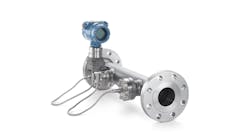Credit: Credit: Zina Deretsky, National Science Foundation
Findings of an international research team led by University of Alaska Fairbanks scientists Natalia Shakhova and Igor Semiletov reveal a section of the Arctic Ocean seafloor that holds vast stores of frozen methane is showing signs of instability and widespread venting of the greenhouse gas, as noted in a report by the National Science Foundation.
The research results, published in the March 5 edition of the journal Science, show that the permafrost under the East Siberian Arctic Shelf, long thought to be an impermeable barrier sealing in methane, is perforated and is starting to leak large amounts of methane into the atmosphere. Release of even a fraction of the methane stored in the shelf could trigger abrupt climate warming, according to the National Science Foundation.
Methane is a greenhouse gas more than 30 times more potent than carbon dioxide. It is released from previously frozen soils in two ways. When the organic material (which contains carbon) stored in permafrost thaws, it begins to decompose and, under anaerobic conditions, gradually releases methane. Methane can also be stored in the seabed as methane gas or methane hydrates and then released as subsea permafrost thaws. These releases can be larger and more abrupt than those that result from decomposition.
The East Siberian Arctic Shelf is a methane-rich area that encompasses more than two million square kilometers of seafloor in the Arctic Ocean. It is more than three times as large as the nearby Siberian wetlands, which have been considered the primary Northern Hemisphere source of atmospheric methane. Shakhova”s research results show that the East Siberian Arctic Shelf is already a significant methane source, releasing seven teragrams of methane yearly, which is as much as is emitted from the rest of the ocean. A teragram is equal to about 1.1 million tons.
According to researchers working on the project, the concern is that further destabilization of the permafrost could result in methane releases significantly larger than teragrams. Researchers note that the Earth”s geological record indicates that atmospheric methane concentrations have varied between about .3 to .4 parts per million during cold periods to .6 to .7 parts per million during warm periods. Current average methane concentrations in the Arctic average about 1.85 parts per million, the highest in 400,000 years. Concentrations above the East Siberian Arctic Shelf are even higher.
Collaborators from 12 institutions in five countries plan to continue their studies in the East Siberian Arctic Shelf region, tracking the source of the methane emissions and drilling into the seafloor in an effort to estimate how much methane is stored there.
For the full text of the NSF report on this story, click here.


